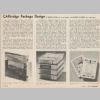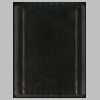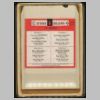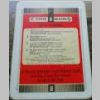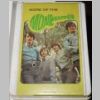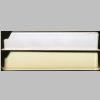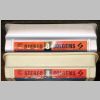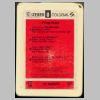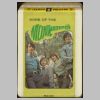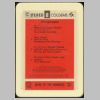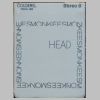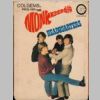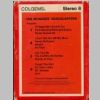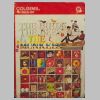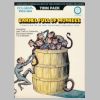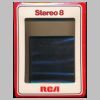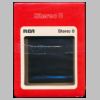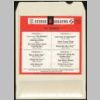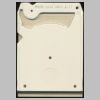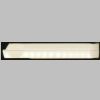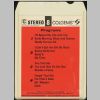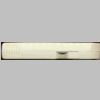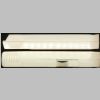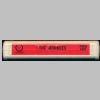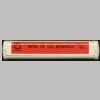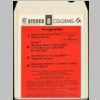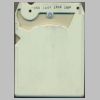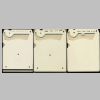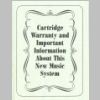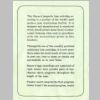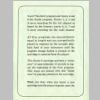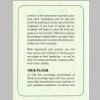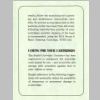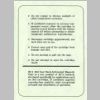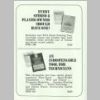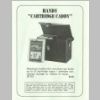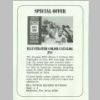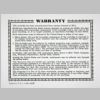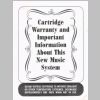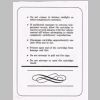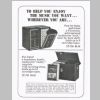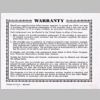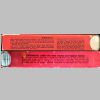brief history of the stereo 8
cartridges & cases
Although commonly referred to as 8-Tracks today,
the RCA branded version was known as "Stereo 8".
The Stereo 8 Cartridge was created in 1964 by a consortium
led by Bill Lear of the Lear Jet Corporation.
RCA first introduced these in the Fall of 1965 with 175 titles.
The next year saw the release of the Monkees first album
on this new "Stereo 8" format.
Cases/Slipcovers
Early Lear Jet cases were made from polyurethane resin with a thin layer
of styrene laminate for the external glossy surface.
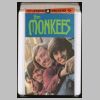
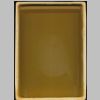
Time is not kind to polyurethane as it tends to crumble and fall apart
onto the cartridge (or your hands) leaving a mess.
The bottom tray was clear plastic so when you flipped it over
to see the track listings
you just saw the label on the cartridge itself.
This bottom tray wasn't very well secured and when you picked it up
the wrong way it would sometimes slide off.
So in January '67 RCA discontinued the clear plastic tray and created a
white plastic bottom that had the label directly on it. This allowed the case
to snap shut. "More Of The Monkees" was released
this way
and their first tape was updated with this change.
Some time during of the original run of MOTM,
RCA stopped making the cases with polyurethane/styrene (bright white)
and switched to the regular plastic (dull white).
The cases got slightly shorter too,
but it didn't really matter because they were a little too big anyway.
With Headquarters the cartridges were redesigned
and became Lear Jet Stereo 8. Their first two releases were
subsequently updated
with new labels in the latter part of '67 or '68.
Finally, with the release of "Head" in December 1968
RCA switched
to the
paperboard sleeves.
The previous releases were updated
and sold with these paperboard sleeves, but these are extremely
difficult to find
so this research is ongoing.
Here are what we have found so far:
Some had the artwork/tracks printed directly
on the
front & reverse sleeve.
Whereas others had generic RCA sleeves with a sticker for the front artwork
and the reverse is a cut away to show the cartridge.
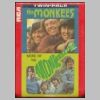
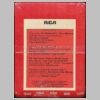
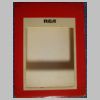
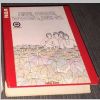
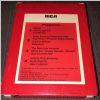
Bottom edge has a 1969 copyright
------------------------------------------------------
These generic slipcovers were found beginning in 1970
and were used mostly for the 8-track version of the cut-out bin.
RCA must have decided that printing more of the artists slipcovers
was not worth the effort. Ed Reilly said he found a sealed Pisces tape
in one these sometime in the '70s.
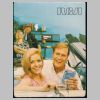
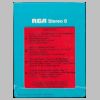
Bottom edge has a 1970 copyright
--------------------------------------------
The final Colgems release Barrel Full Of Monkees (January '71)
was one of the last RCA tapes to have a full artwork sleeve.
-------------------------------------------------
In a final cost cutting move in the middle of '71,
RCA created a generic slipcover
for all their releases (Stereo 8 & Q8).
Tapes found for sale on ebay and other places are usually found
with these slipcovers, if they have one at all.
=========================
Cartridges
The "Lear Jet Pak 8" cartridges had a
distinctive design
identified
by a 1 by 3 inch slightly curved indentation
on the lower front of the cartridge;
the end you inserted into the player.
"Lear Jet Pak 8" was also stamped into the back case top.
These are sometimes called 'flat paks'.
Generally speaking, these Lear jet tapes were also called 5 pin connectors;
seen below with the 5 holes. This is how the top and bottom were connected.
They were originally designed to snap together (or apart) to make tape repairs easier.
The cartridge was updated in early '67
and the name
changed to
"Lear Jet Stereo 8".
Headquarters, Pisces & early copies of the Birds tapes
were issued with this style cart.
Comparison of the two cartridges
--------------------------------------------
The Colgems circle logo made it's first appearance
with their third LP release "Headquarters".

Exactly when the previous cartridges were
updated is unknown;
certainly it was sometime after HQ.
--------------------------------------------------
Then in 1968 during the production of the 'Birds' release RCA switched
to
what is commonly called
a rivet cartridge, which used a rivet fastener
in the top center
and removed the three lower pin connectors.
These carts were a little more difficult to repair since the rivet
was rather difficult to unscrew. However, modern repair techniques use a soldering iron
to melt the plastic around the rivet just enough to pull them apart.
================================
Warranty Cards &
Cartridge Care
December 1966
Printed on light green paper,
This one came with my "Headquarters" Stereo 8.
On the last page the date is printed at the bottom;
Here are a couple of others
that are the same except for:
Dated September 1966
Dated September 1967
In late 1968
with the switch to paperboard slipcovers,
RCA began printing this information directly on the sides of the sleeves.

